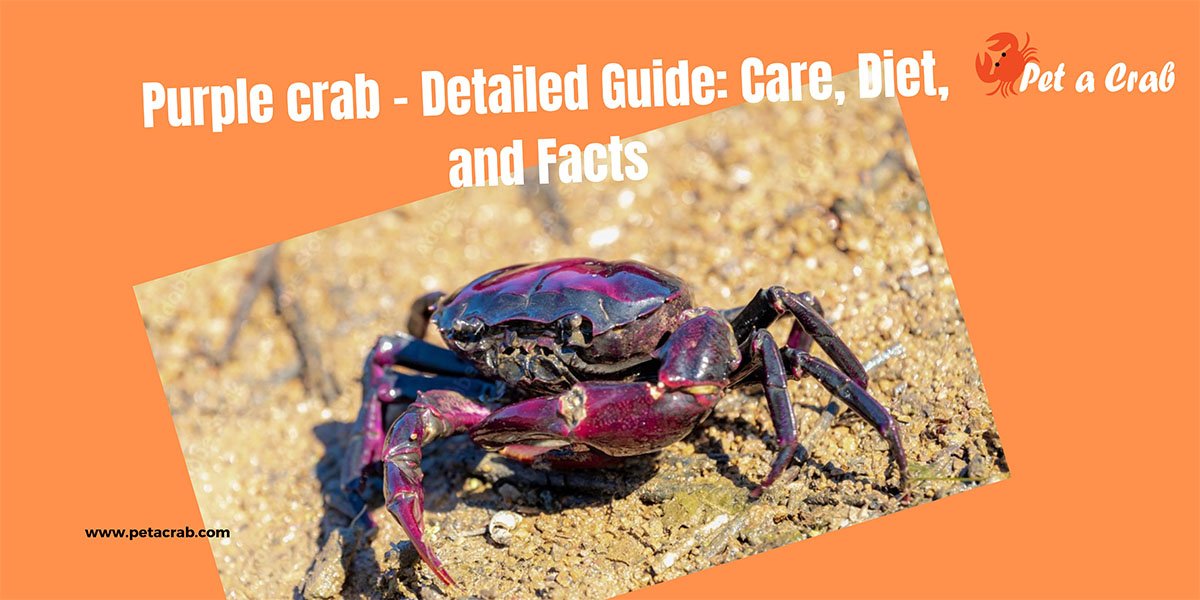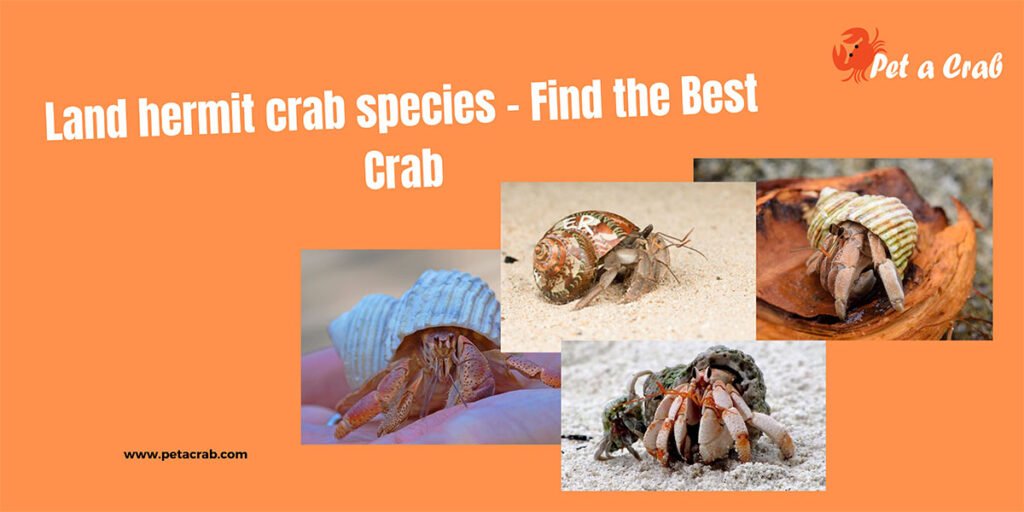The Palawan purple crab, a relatively new species, was described by German taxonomist Hendrik Freitag in 2012. As the species has been discovered in recent years, it is hard to find one in the store, while crab enthusiasts become eager to get these beautiful purple crabs.

It is a freshwater semi-terrestrial crab, and its care is very simple. Here, you’ll learn all the requirements for Palawan purple crabs, including interesting facts.
Quick overview of palawan purple crab
| Names | Purple crab, Palawan purple crab, crab purple, freshwater purple crab, Palawan crab |
| Scientific name | Insulamon palawanense |
| Size | 2.5–5.3 cm (1.0–2.1 inch) |
| Optimal temperature | 22-26°C (72-79°F) |
| Color | Purple |
| Diet | Omnivore |
| Habitat type | Freshwater paludarium |
| Care level | Easy |
| Sleeping nature | Nocturnal |
Taxonomy
- Family: Potamidae
- Subfamily: Potamiscinae
- Genus: Insulamon
Purple crab facts
Habitat and Distribution of Freshwater Purple Crab
They can be found on the underside of boulders and in submerged root packs near freshwater sources.
The Palawan purple crab is endemic to the island of Palawan, Philippines, meaning it can only be found in Palawan.
They only depend on freshwater, so the sea keeps them from spreading further. Their limited habitat area can cause extinctions.
Appearance (Insulamon palawanense)
The crab has a wide carapace; the front edge of the carapace is almost straight but has slight dips in the middle. In the front and side areas, the carapace has a rugged texture with small bumps and grooves.
They have one bigger claw than the other, with a rough outer surface and a smooth inner surface. They have four pairs of legs, the second pair being the longest, and the legs have stiff hairs arranged in lines.
Typically, the palawan purple crab has a reddish purple hue, with the purple covering most of the area and the claw being red. They vary in color, like the young and females are more violet, and the male purple crab species are more reddish.
It is probable that the coloration has a signal function for social behavior. 1

Caring for captive purple crab: purple crab pet
Paludarium setup – crab purple
As purple crabs are semi-terrestrial, they’ll need a paludarium. Basically, half or more of the land has freshwater. The water area can be more than land, but you need to ensure they have enough surface area to walk and climb.
If you have previous experience with a paludarium, you just have to bring the crabs in, and you are all set. Just follow the requirements below.
Size
Take a ten-gallon tank for one or two crabs. Increase the size if you plan to keep any other crabs or frogs.
Substrate
Choose a substrate that holds moisture and humidity. A mix of sand and soil will be a great combo for the paludarium, or you can go for easy commercial substrates like aqua sugar white sand and bio stratum.
Decoration (purple freshwater crab)
Place some spider wood and roots. It will mimic their natural habitat, as the purple crabs are mostly found under roots. Place some rocks where they can also hide.
Finish the setup as you like, but don’t forget to add some moss, ferns, and other paludarium plants
Water requirements of the palawan crab
The pH of the water should be around 7.0, with a temperature between 22 and 26 °C. The water should be fully freshwater; no brackish or saltwater.
Pour the water accordingly, so that the biggest crab can submerge fully and ensure they have an easy way to get out of the water.

What do Palawan purple crabs eat?
In the wild, the purple crabs depend on dead plant matter, fruits and small animals.
Start with vegetables and fruits; there is no limitation on which they can eat or which they can’t, as they are omnivorous. Except for some highly sugary or salty foods, any milk-based foods, uncooked potatoes and spicy foods.
Cut them into small pieces before serving. Sometimes they may keep the food for a while to rot and then eat it, which is pretty normal. However, don’t let the food spoil the habitat and bring mites.
Consider keeping a meat source like bloodworms, brine shrimps or krill. Also, chicken is a good option. Include fish flakes and pellets in the diet.
The purple crabs will go through molting several times in their lifespan. So they’ll need a calcium-rich food source like cuttlebone. Calcium helps grow a strong exoskeleton and recover from molting quickly.
Related articles:

What animals can live with the purple crabs?
In the paludarium, there are 2 sections where you can keep several types of animals.
For the water, you can consider fish like guppies, mollies and barbs. Basically, non aggressive fish are those that are about their size or less than their size.
There are some fully aquatic freshwater crabs you can also keep with them, like the towuti crab, the pom pom crab and the Thai micro crab. These crabs share the same water requirements and go to land.
Also, like the purple crabs, you can choose other semi terrestrial crabs like the vampire crabs or blue spider crabs. Ensure the population doesn’t get too dense, as it can lead to territorial and aggressive behavior.
Frequently asked questions
Are purple crabs real?
Yes, purple crabs are absolutely real! The Palawan purple crab (Insulamon palawanense) is a rare species discovered in 2012 by German taxonomist Hendrik Freitag. It’s native only to the island of Palawan in the Philippines.
How rare is a purple crab?
Very rare. The Palawan purple crab is endemic to a limited region in Palawan and can’t spread due to its dependence on freshwater habitats. Their rarity makes them a collector’s gem for crab enthusiasts.
When was the purple crab discovered?
The Palawan purple crab was officially described in 2012 by Hendrik Freitag. Since then, it has gained attention for its vivid color and limited range.
Is purple crab poisonous or harmful to humans?
No, purple crabs are not poisonous to humans. There’s no evidence suggesting any toxins or harmful effects from handling or keeping them. They are peaceful, semi-terrestrial freshwater crabs and completely safe.
Can you eat purple crabs?
Technically, you can eat any crab, but the Palawan purple crab is not for eating. It’s far too rare, and consuming it would be a conservation concern. These crabs are best appreciated alive in a properly maintained paludarium, not on a dinner plate.
Are purple crabs freshwater crabs?
Yes, Palawan purple crabs are freshwater and semi-terrestrial, meaning they need both land and fresh water to thrive. They cannot survive in brackish or saltwater environments.
What crab has purple claws?
The Palawan purple crab is known for its reddish-purple body and red claws. Males often appear more red-toned, while females and juveniles lean more violet in color.


